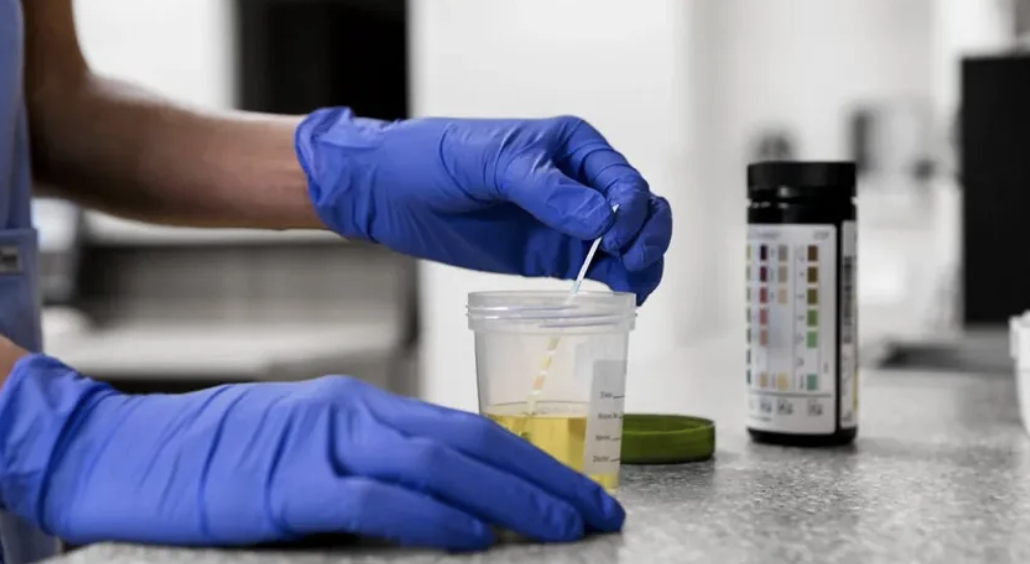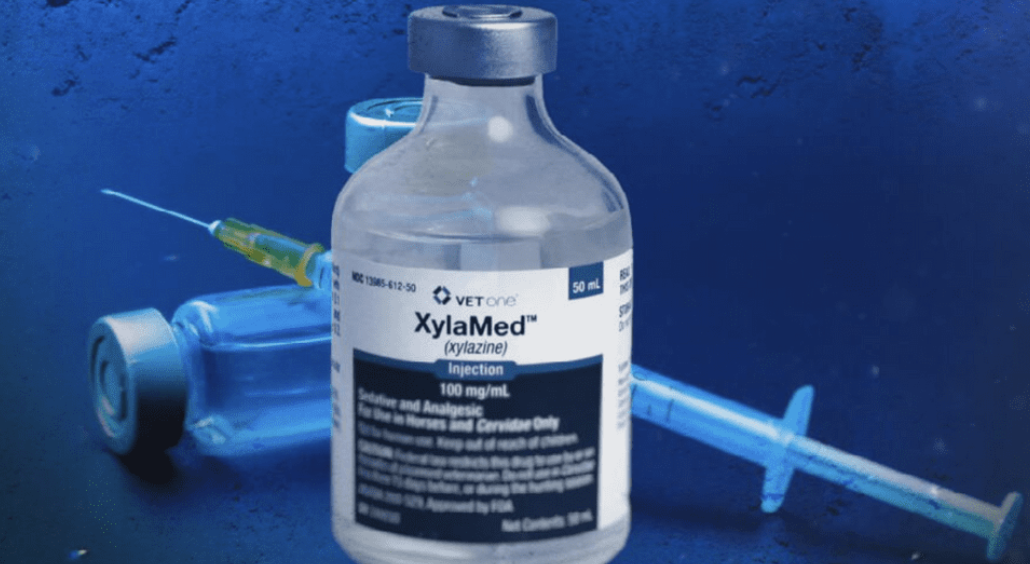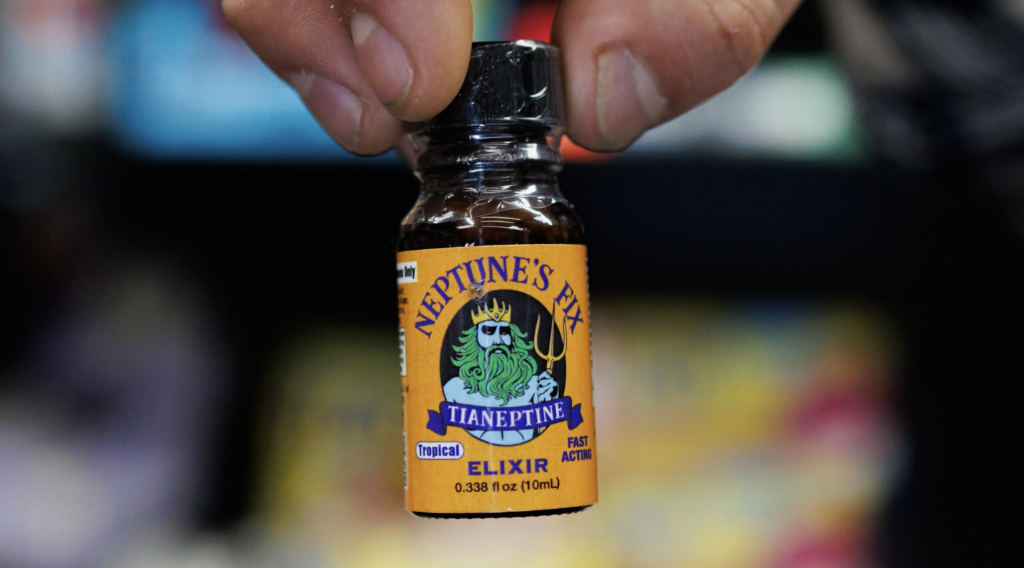Is long-term use of buprenorphine safe and effective for treating opioid use disorder (OUD)? In this article, we discuss its benefits, potential risks, and what extended treatment involves.
Key Takeaways
- Buprenorphine is a partial opioid agonist that effectively manages opioid use disorder (OUD) by relieving withdrawal symptoms and reducing cravings without the high risk of overdose.
- Long-term buprenorphine use, typically lasting over 12 months, significantly decreases relapse rates, opioid-related hospitalizations, and healthcare costs, contributing to improved overall quality of life.
- The decision for long-term buprenorphine treatment should be personalized, considering individual patient needs, with ongoing medical supervision to ensure safety and effectiveness throughout the recovery process.
What is buprenorphine, and how does it work?
Buprenorphine is a partial opioid agonist, a medication that has revolutionized the treatment of opioid use disorder (OUD). Unlike full opioid agonists, which fully activate opioid receptors, buprenorphine binds to these receptors but only partially activates them, producing a milder euphoria and respiratory depression. This mechanism helps block withdrawal symptoms and reduce cravings, effectively managing opioid dependence and the mu opioid receptor.
One might wonder how buprenorphine stands out from other medications used in opioid substitution treatment, such as those compared in Suboxone vs Methadone.
- Full agonists like methadone fully activate opioid receptors, leading to higher risks of overdose and dependency.
- Antagonists like naltrexone completely block these receptors, potentially precipitating withdrawal in opioid-dependent individuals.
- Buprenorphine strikes a balance, providing relief from withdrawal without the high risk of overdose, thanks to its ceiling effect that limits its opioid activity.
Common brand names of buprenorphine include Suboxone and Subutex. Learn more about what buprenorphine is and how it works. Suboxone combines buprenorphine with naloxone, an opioid antagonist, to further reduce the potential for misuse by causing withdrawal symptoms if the medication is injected rather than taken as prescribed. Subutex, on the other hand, contains only buprenorphine and is often used in the initial stages of treatment.
Buprenorphine’s benefits extend beyond managing withdrawal. Its role in opioid therapy has been pivotal, offering a safer alternative to prescription opioids for chronic pain management and significantly reducing the risks associated with prolonged opioid use. This makes buprenorphine not just a treatment option but a cornerstone in modern addiction medicine.
Initiating prescribed buprenorphine prescriptions is a critical step in treatment initiation, transitioning individuals from opioid dependence to recovery. The journey starts with careful prescribing, dose adjustment to meet the patient’s needs, and monitoring to ensure optimal outcomes. This process highlights the vital role of buprenorphine maintenance treatment in achieving sustained recovery from opioid addiction.

What does “long-term use” of buprenorphine mean in medical practice?
In medical practice, “long-term use” of buprenorphine typically refers to a treatment duration of more than 12 months. This extended period is often necessary to stabilize patients, reduce the risk of relapse, and support sustained recovery from opioid use disorder (OUD). However, the duration of buprenorphine treatment can vary significantly among individuals, depending on factors such as the severity of opioid dependence, history of relapse, and overall health.
The forms of buprenorphine administration for extended use include sublingual formulations, tablets, films, and extended-release injections. These different formulations offer flexibility in treatment, allowing healthcare providers to tailor buprenorphine treatment to the specific needs and preferences of the patient. For instance, buprenorphine extended-release injections provide a sustained release of medication, reducing the need for daily dosing and potentially improving adherence.
Expert guidelines, such as those from the Substance Abuse and Mental Health Services Administration (SAMHSA) and the American Society of Addiction Medicine (ASAM), emphasize the importance of individualized treatment plans. These guidelines recognize that some patients may benefit from indefinite buprenorphine maintenance treatment, while others may eventually taper off the medication. The key is to prioritize patient safety and recovery outcomes, rather than adhering to a one-size-fits-all approach.
Prescribing buprenorphine for long-term use requires a comprehensive understanding of the patient’s opioid use disorder, including their medical history, mental health status, and social support systems. This holistic approach ensures that the treatment plan is not only effective but also sustainable, addressing the multifaceted nature of opioid addiction and allowing healthcare providers to prescribe buprenorphine appropriately.
Benefits of long-term buprenorphine maintenance
The benefits of long-term buprenorphine maintenance are profound and multifaceted:
- Reduction in relapse and overdose risk.
- Patients who remain on buprenorphine for extended periods exhibit a lower likelihood of returning to prescription opioid use compared to those who discontinue earlier.
- Marked decrease in opioid-related hospitalizations and overdose events.
These points highlight the critical role of buprenorphine in preventing fatal respiratory depression in life threatening respiratory depression situations.
Beyond the immediate health benefits, long-term buprenorphine treatment has been shown to improve overall quality of life. Patients often experience better employment outcomes, stability in housing, and enhanced social relationships. These improvements are attributed to the stabilization provided by buprenorphine, which allows individuals to focus on rebuilding their lives, rather than battling constant cravings and withdrawal symptoms.
Long-term outcome studies have consistently demonstrated that extended buprenorphine treatment is associated with significant decreases in inpatient and emergency department visits, suggesting improved clinical outcomes. This reduction in healthcare utilization not only benefits the patient but also leads to lower healthcare costs associated with opioid misuse.
Prolonged buprenorphine treatment also improves treatment retention rates and adherence to treatment protocols. Patients who stay on buprenorphine for over a year are more likely to remain engaged in their treatment programs, which is a key factor in achieving long-term recovery. This adherence is vital in breaking the cycle of addiction and fostering sustained recovery.
It is important to recognize that indefinite buprenorphine maintenance may be appropriate for some patients. The decision to continue buprenorphine treatment long-term should be based on individual needs and circumstances, rather than arbitrary timelines. This personalized approach ensures that patients receive the support they need for as long as they need it, ultimately leading to more successful recovery outcomes.
Risks and side effects of long-term buprenorphine use
While the benefits of long-term buprenorphine use are substantial, it is essential to acknowledge and address the potential side effects of Suboxone, especially with extended use. Common side effects include:
- constipation
- sleep issues
- hormonal impacts These side effects can often be managed with appropriate medical supervision and lifestyle adjustments, ensuring that patients can continue their buprenorphine treatment without significant discomfort.
Physical dependence is another consideration with long-term buprenorphine use. Patients may develop a dependence on the medication, and discontinuing it abruptly can lead to withdrawal symptoms. However, this dependence is different from the destructive cycle of opioid addiction and opiate dependence. Managing buprenorphine use under medical supervision, with gradual tapering when appropriate, is essential.
Misuse and diversion risks are also potential concerns. Buprenorphine has a lower potential for misuse compared to full agonist opioids, thanks to its ceiling effect that limits opioid activity. Nevertheless, it is crucial to implement strategies to reduce misuse and diversion, such as using formulations that combine buprenorphine with naloxone or employing buprenorphine extended-release injections that are less prone to diversion, alongside opioid analgesic risk evaluation.
Comparing the risks of long-term buprenorphine use to those of untreated opioid use disorder reveals that the benefits far outweigh the potential drawbacks. Untreated OUD is associated with a high risk of overdose, relapse, and severe health complications. In contrast, buprenorphine maintenance provides a safer and more stable path to recovery, even with its potential side effects.
Regular supervision and health monitoring are crucial to minimizing risks and side effects. Healthcare providers must work closely with patients to adjust dosages, manage side effects, and address any emerging issues promptly. This collaborative approach ensures that the benefits of long-term buprenorphine use are maximized while minimizing potential risks.

Is it safe to stay on buprenorphine long term?
The safety of long-term buprenorphine use is supported by a robust body of clinical evidence and expert consensus. Studies have consistently shown that buprenorphine is both safe and effective for prolonged use, providing a stable platform for individuals recovering from opioid dependence. The tolerability and effectiveness of buprenorphine make it a viable long-term treatment option for many patients.
Clinical consensus emphasizes that the duration of buprenorphine treatment should be tailored to the individual needs of the patient. Organizations such as the National Institute on Drug Abuse (NIDA) and the American Society of Addiction Medicine (ASAM) advocate for flexible treatment durations based on patient progress and outcomes, rather than fixed timelines. This patient-centered approach ensures that individuals receive the support they need for as long as necessary to achieve sustained recovery.
Regular supervision and health monitoring are crucial components of long-term buprenorphine treatment. Healthcare providers must continuously assess the patient’s response to treatment, adjust dosages as needed, and address any emerging health concerns. This ongoing supervision helps to ensure that buprenorphine remains a safe and effective component of the patient’s recovery plan.
Expert perspectives from medical associations highlight the importance of long-term buprenorphine maintenance in combating the opioid epidemic. By providing a safe and effective treatment option, buprenorphine helps to reduce the risks associated with opioid addiction, including overdose and relapse. This makes it a critical tool in the broader strategy to address the opioid crisis and support individuals on their path to recovery.
Common misconceptions about long-term buprenorphine treatment
Despite its proven effectiveness, long-term buprenorphine treatment is often misunderstood. One common misconception is that buprenorphine merely replaces one addiction with another. However, this view overlooks the fact that buprenorphine treatment is a medically supervised process designed to manage opioid dependence safely and effectively. Unlike illicit opioid use, buprenorphine use is controlled, reducing the risk of overdose and enabling individuals to lead stable lives.
Another misconception is that patients should get off buprenorphine as soon as possible. In reality, the clinical reasoning for extended use is based on the need for ongoing support to prevent relapse and ensure sustained recovery. The decision to taper off buprenorphine should be made collaboratively between the patient and their healthcare provider, taking into account their progress and readiness.
Some people believe that being on buprenorphine means they are not genuinely recovering. This stigma fails to recognize that medication-assisted treatment (MAT) is a legitimate and effective component of medical treatment recovery frameworks. Recovery can encompass the use of prescribed medications to manage addiction effectively, allowing individuals to rebuild their lives and achieve long-term sobriety.
There is also a misconception that buprenorphine is often misused. In reality, buprenorphine has a lower potential for misuse compared to full agonist opioids, thanks to its partial agonist properties and ceiling effect. This makes it a safer option for managing opioid dependence, with a reduced risk of diversion and misuse.
Finally, some believe that therapy is mandatory alongside buprenorphine treatment. While therapy and support programs can enhance recovery outcomes, studies have shown that buprenorphine can be effective on its own. The key is to tailor the treatment plan to the individual’s needs, ensuring they receive the appropriate level of support to achieve sustained recovery.
How to decide if long-term buprenorphine is right for you
Deciding whether long-term buprenorphine treatment is right for you involves considering several risk factors:
- The severity of opioid use disorder (OUD)
- History of relapse
- Mental health status
- Lifestyle
Patients with severe pain OUD or a history of frequent relapses may benefit more from a longer treatment duration of extended buprenorphine treatment and subst abuse treat for opioid dependent patients.
Collaborative decision-making with healthcare providers is essential in determining the appropriate treatment plan. Providers can offer valuable insights into the benefits and risks of long-term buprenorphine use, helping patients make informed decisions based on their unique circumstances. This collaborative approach ensures that the treatment plan is tailored to the individual’s needs and goals.
The role of therapy and support programs cannot be overlooked. While buprenorphine can be effective on its own, integrating therapy and support programs can enhance recovery outcomes. These programs provide additional tools and resources to address the underlying causes of addiction and support long-term recovery.
Ultimately, the decision to pursue long-term buprenorphine treatment should be based on a comprehensive assessment of the patient’s needs and circumstances. By working closely with healthcare providers and considering all available options, patients can choose the path that offers the best chance for sustained recovery.
Alternatives to long-term buprenorphine treatment
While buprenorphine is a highly effective option for opioid use disorder, it is not the only medication-assisted treatment (MAT) available. Other alternatives include methadone treatment and naltrexone, each with their unique benefits and considerations. Methadone, a full opioid agonist, has been used for decades in opioid substitution treatment and opioid treatment programs. It is highly effective but requires daily dosing and is usually administered in specialized clinics, which can limit accessibility. Additionally, office based opioid treatment is an option that can enhance accessibility for patients.
Naltrexone, an opioid antagonist, works by blocking the effects of opioids. Key points about naltrexone include:
- Unlike buprenorphine and methadone, naltrexone does not produce opioid effects and can precipitate withdrawal if not initiated correctly.
- It is available in both oral and extended-release injectable forms, offering flexibility in administration.
- Naltrexone requires complete detoxification before use, which can be a barrier for some patients.
The effectiveness, side effects, and accessibility of these alternatives vary. Methadone is highly effective but has a higher risk of overdose and dependency compared to buprenorphine. Naltrexone, while effective in preventing relapse, may not be suitable for patients who struggle with adherence to a daily medication regimen. Each of these treatments has its place in the spectrum of opioid use disorder management, including placebo or methadone maintenance, and the choice of treatment should be individualized based on patient needs and circumstances.
Suitability for different types of patients is a critical consideration when choosing between these alternatives:
- Methadone may be more appropriate for individuals with high levels of opioid dependence who need a structured treatment environment.
- Naltrexone might be suitable for those who have already detoxified and can adhere to a less frequent dosing schedule.
- Buprenorphine offers a middle ground, balancing effectiveness with a lower risk of misuse and greater accessibility.
When and how to safely taper off buprenorphine
Tapering off buprenorphine is a highly individualized process that should be approached with caution and under medical supervision. The decision to taper should be based on the patient’s stability, progress in recovery, and readiness to discontinue the medication. A slow and gradual tapering process is recommended to minimize withdrawal symptoms and reduce the risk of relapse. Discover expert guidance on how to get off Suboxone.
Safe tapering practices involve gradually reducing the buprenorphine dose over time. This can help the body adjust to lower levels of the medication and prevent the onset of severe withdrawal symptoms. The tapering schedule should be personalized, with adjustments made based on the patient’s response to dose reductions. Regular monitoring and support from healthcare providers are essential during this process.
Signs that may indicate readiness to taper off buprenorphine include:
- Stable mental health
- Consistent engagement in recovery activities
- A strong support system
- Ability to manage stress and triggers without relying on medication
These indicators suggest that the patient is well-positioned to transition off buprenorphine without compromising their recovery.
Relapse prevention strategies are crucial when tapering off buprenorphine. This includes continued participation in therapy and support groups, developing a relapse prevention plan, and having access to resources for immediate support if needed. The goal is to provide a safety net that helps the patient maintain their recovery even after discontinuing buprenorphine.
Real-world outcomes and success stories from long-term buprenorphine use
Real-world outcomes and success stories provide compelling evidence of the effectiveness of long-term buprenorphine treatment. One case study involved a patient who had struggled with opioid dependence for years. After starting buprenorphine treatment, they experienced significant reductions in cravings and withdrawal symptoms, allowing them to regain control over their life and achieve stable employment. This transformation highlights the profound impact that buprenorphine can have on an individual’s recovery journey.
Measurable outcomes such as relapse rates and employment status further underscore the benefits of long-term buprenorphine use. Studies have shown that patients on extended buprenorphine treatment have lower relapse rates compared to those who discontinue early. Additionally, many patients report improvements in their employment status, with increased job stability and productivity. These outcomes demonstrate the broader social and economic benefits of buprenorphine maintenance treatment.
Testimonials from patients provide personal insights into the effectiveness of buprenorphine. One patient shared how buprenorphine helped them break free from the cycle of addiction and rebuild their life. They emphasized the importance of ongoing support and the role of buprenorphine in providing a stable foundation for their recovery. Such stories offer hope and encouragement to others on their recovery journey.
Success stories also highlight the role of healthcare providers in supporting long-term buprenorphine treatment. Patients often cite the importance of compassionate and knowledgeable providers who offer personalized care and guidance. This underscores the value of a collaborative approach to treatment, where patients and providers work together to achieve sustained recovery.
The positive outcomes associated with long-term buprenorphine use are a testament to its effectiveness as a treatment for opioid use disorder. These success stories and measurable outcomes provide a powerful narrative that supports the validity of buprenorphine maintenance treatment, offering hope and inspiration to those seeking recovery.

Expert perspectives on long-term buprenorphine maintenance
Expert perspectives on long-term buprenorphine maintenance emphasize the importance of individualized treatment plans that align with the patient’s needs and benefits. Addiction medicine professionals advocate for flexibility in treatment duration, recognizing that some patients may require extended or indefinite buprenorphine maintenance to achieve sustained recovery. This patient-centered approach ensures that treatment is tailored to the individual’s unique circumstances.
Research indicates that continuous buprenorphine treatment significantly reduces the risk of inpatient care and overdose events compared to shorter treatment durations. This evidence supports the notion that longer-term buprenorphine therapy can lead to better health outcomes, including decreased opioid use and improved overall well-being. These findings highlight the critical role of buprenorphine in managing opioid dependence effectively.
Experts recommend that health policies should support longer access to buprenorphine to combat issues related to the opioid epidemic. Barriers such as prior authorization requirements for buprenorphine can hinder continuous treatment and adversely affect patient outcomes. By advocating for policies that facilitate access to buprenorphine, experts aim to ensure that more patients can benefit from this life-saving treatment.
The consensus among specialists is that long-term buprenorphine maintenance is a vital component of the broader strategy to address the opioid crisis. By providing a safe and effective treatment option, buprenorphine helps to reduce the risks associated with opioid addiction, including overdose and relapse. This makes it a critical tool in the fight against the opioid epidemic and underscores the importance of supporting long-term buprenorphine treatment.
Bottom Line: Long-term buprenorphine use is a valid path to recovery
Long-term use of buprenorphine is a valid and often necessary path to recovery for many individuals struggling with opioid use disorder. The evidence supporting its safety and effectiveness is robust, with significant reductions in illicit opioid use, relapse rates, and overdose events. Buprenorphine’s accessibility, as it can be prescribed by certified physicians, contributes to its potential positive impact on public health compared to methadone.
Medication-assisted treatment with buprenorphine helps improve long-term recovery outcomes by decreasing the frequency of opioid use over several years. Embracing the legitimacy and safety of long-term buprenorphine use supports individuals on their recovery journey, reduces the stigma associated with medication treatment, and promotes informed, personalized care decisions.
FAQs about long-term buprenorphine use
Is buprenorphine addictive if used long-term?
Buprenorphine can lead to physical dependence with long-term use, but it is designed to be a safer option for managing opioid dependence under medical supervision. Thus, while it may not cause addiction in the traditional sense, careful monitoring is essential.
Can I drive or work on buprenorphine?
You can drive and work while on buprenorphine, provided you monitor its effects on you personally and consult your healthcare provider to confirm safety for these activities. It is crucial to prioritize your well-being and the safety of others.
Will I ever be able to stop taking it?
Yes, many patients can successfully discontinue buprenorphine with the appropriate support and a carefully planned tapering schedule developed with their healthcare provider. It is essential to assess your readiness and progress regularly in collaboration with your healthcare team.
Does long-term use affect my organs?
Long-term use of buprenorphine typically does not negatively impact your organs, especially with regular health monitoring by your healthcare provider. This proactive approach helps to promptly identify and address any potential concerns.
How long should I stay on buprenorphine?
The duration of buprenorphine treatment should be tailored to individual needs, with some patients remaining on it long-term while others may taper off once they achieve stability. It is essential to consult with a healthcare professional to determine the most appropriate plan for your situation.















